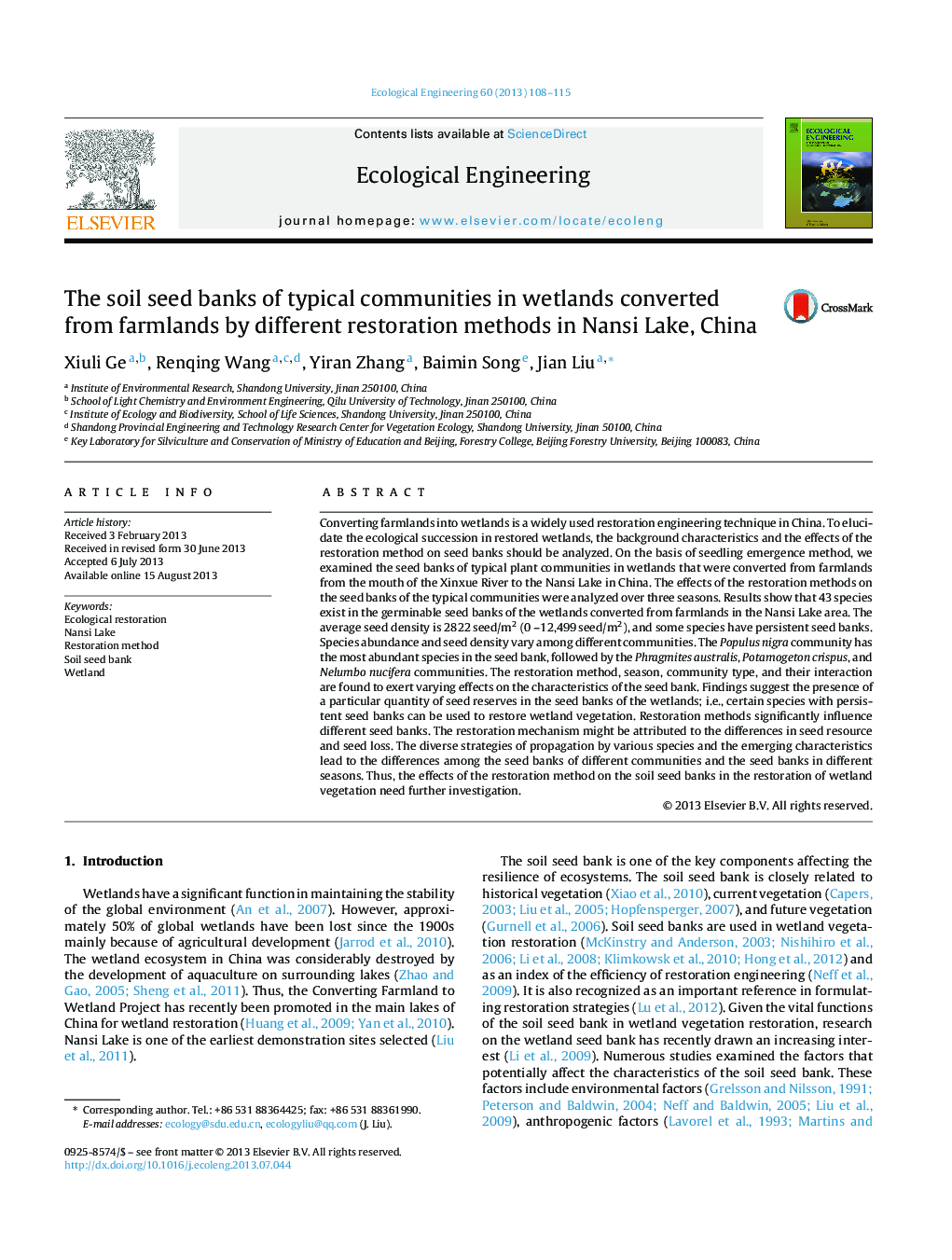| Article ID | Journal | Published Year | Pages | File Type |
|---|---|---|---|---|
| 6302360 | Ecological Engineering | 2013 | 8 Pages |
Abstract
Converting farmlands into wetlands is a widely used restoration engineering technique in China. To elucidate the ecological succession in restored wetlands, the background characteristics and the effects of the restoration method on seed banks should be analyzed. On the basis of seedling emergence method, we examined the seed banks of typical plant communities in wetlands that were converted from farmlands from the mouth of the Xinxue River to the Nansi Lake in China. The effects of the restoration methods on the seed banks of the typical communities were analyzed over three seasons. Results show that 43 species exist in the germinable seed banks of the wetlands converted from farmlands in the Nansi Lake area. The average seed density is 2822Â seed/m2 (0 -12,499Â seed/m2), and some species have persistent seed banks. Species abundance and seed density vary among different communities. The Populus nigra community has the most abundant species in the seed bank, followed by the Phragmites australis, Potamogeton crispus, and Nelumbo nucifera communities. The restoration method, season, community type, and their interaction are found to exert varying effects on the characteristics of the seed bank. Findings suggest the presence of a particular quantity of seed reserves in the seed banks of the wetlands; i.e., certain species with persistent seed banks can be used to restore wetland vegetation. Restoration methods significantly influence different seed banks. The restoration mechanism might be attributed to the differences in seed resource and seed loss. The diverse strategies of propagation by various species and the emerging characteristics lead to the differences among the seed banks of different communities and the seed banks in different seasons. Thus, the effects of the restoration method on the soil seed banks in the restoration of wetland vegetation need further investigation.
Related Topics
Life Sciences
Agricultural and Biological Sciences
Ecology, Evolution, Behavior and Systematics
Authors
Xiuli Ge, Renqing Wang, Yiran Zhang, Baimin Song, Jian Liu,
